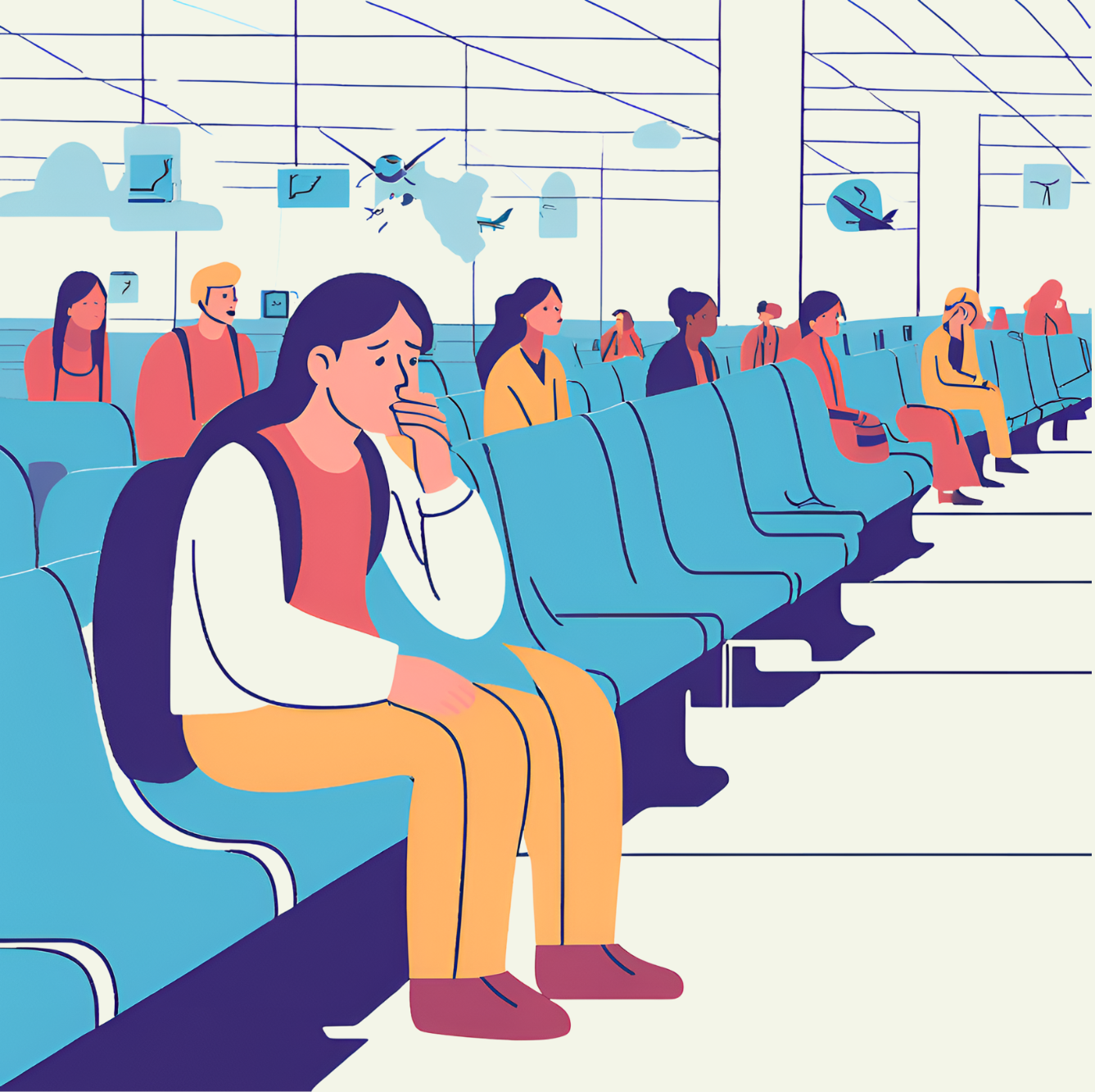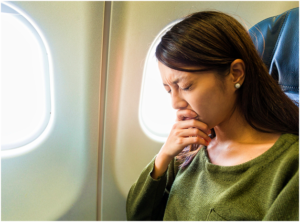Can You Fly With Pneumonia? A Comprehensive Guide for Travelers

Traveling can be challenging, especially when dealing with health concerns like pneumonia. If you’re planning a trip to Italy or need medical assistance while exploring the country, it’s crucial to understand the risks and precautions associated with flying with pneumonia. This article addresses common questions about pneumonia and air travel, outlines potential risks, and provides best practices to ensure a safe journey.
What Is Pneumonia and Why Does It Matter When Flying?
Pneumonia is a lung infection that can cause inflammation in one or both lungs, leading to symptoms such as coughing, fever, fatigue, and difficulty breathing. Air travel can exacerbate these symptoms due to changes in air pressure, oxygen levels, and the prolonged confinement of a plane cabin.
Understanding how pneumonia interacts with these factors is essential to determine if flying is a safe option for you.
Can You Fly With Pneumonia?
The short answer is: it depends. Whether you can fly with pneumonia depends on the severity of your condition, your overall health, and your doctor’s advice.
- Mild cases: Individuals with mild pneumonia might be able to fly, provided they have received medical clearance.
- Severe cases: If pneumonia has caused significant symptoms like breathing difficulties, high fever, or fatigue, flying is generally not recommended.
Factors to Consider:
- Oxygen Needs: The reduced cabin pressure during a flight can lower blood oxygen levels, potentially causing respiratory distress.
- Contagion Risk: If your pneumonia is caused by a contagious infection, flying could expose others to the illness.
- Recovery Impact: Traveling can delay recovery and worsen your symptoms.
When in doubt, consult a healthcare professional to evaluate whether your condition permits air travel.
Potential Consequences of Flying With Pneumonia
Flying with pneumonia can pose several risks to both the traveler and those around them. Here are the key concerns:
1. Decreased Oxygen Levels
Cabin air pressure in airplanes is equivalent to an altitude of 6,000–8,000 feet above sea level. For someone with pneumonia, this can result in hypoxemia (low oxygen levels in the blood), leading to shortness of breath, fatigue, and in severe cases, respiratory failure.
2. Worsening Symptoms
The physical stress of air travel can exacerbate pneumonia symptoms, causing severe fatigue, chest pain, or a persistent cough.
3. Risk of Complications
For individuals with preexisting conditions such as asthma, COPD, or heart disease, flying with pneumonia increases the likelihood of complications like:
- Blood clots (deep vein thrombosis)
- Severe hypoxia
- Respiratory distress syndrome
4. Contagion in Confined Spaces
If your pneumonia is caused by a bacterial or viral infection, flying risks spreading the illness to other passengers in the enclosed space of the airplane cabin.
Best Practices to Fly With Pneumonia
If traveling is unavoidable, these steps can help minimize risks and ensure a safer experience when flying with pneumonia:
1. Consult Your Doctor
- Obtain a medical evaluation and clearance before booking your flight.
- Discuss any necessary medications or treatments, such as antibiotics, steroids, or oxygen therapy.
2. Plan Ahead
- Notify the airline about your condition. Some airlines provide additional assistance, such as supplemental oxygen or wheelchair services.
- Choose a short, direct flight to reduce travel time and strain.
3. Stay Hydrated
Drink plenty of water before, during, and after the flight to keep your airways moist and reduce discomfort. Avoid caffeine and alcohol, which can dehydrate you.
4. Wear a Mask
Protect yourself and others by wearing a high-quality mask, such as an N95, to prevent the spread of germs and reduce exposure to potential airborne irritants.
5. Use Medications as Prescribed
Take all prescribed medications, including inhalers, antibiotics, or fever reducers, as directed by your doctor. Keep them within easy reach in your carry-on luggage.
6. Practice Breathing Exercises
Engage in light breathing exercises to help maintain lung function and oxygen levels during the flight.
7. Consider Travel Insurance
Invest in a travel insurance plan that includes medical evacuation services, especially if you’re traveling internationally. This can provide peace of mind and access to urgent care if needed.
When Should You Avoid Flying With Pneumonia?
Certain situations make flying with pneumonia inadvisable, including:
- A fever over 100.4°F (38°C)
- Shortness of breath at rest
- Recent hospitalization for pneumonia
- A doctor’s recommendation to avoid travel
In such cases, postponing your trip until you’ve fully recovered is the safest choice.
Seeking Medical Assistance in Italy
If you’re traveling in Italy and develop symptoms of pneumonia or need assistance managing your condition, ReadyHelp is here to provide prompt, reliable medical services. From consultations to advanced care, ReadyHelp ensures your health and safety are prioritized throughout your journey.
Why Choose ReadyHelp?
- On-demand medical consultations for tourists
- Multilingual healthcare professionals
- Easy access to clinics and hospitals across Italy
Whether you need a routine check-up or emergency support, ReadyHelp is a trusted partner for travelers in need.
Final Thoughts
Flying with pneumonia requires careful planning and consideration of your health and safety. If air travel is unavoidable, take necessary precautions and seek medical advice to minimize risks. When traveling in Italy, rely on ReadyHelp for professional medical support tailored to your needs.
Stay safe and travel smart with ReadyHelp!
Recommended Articles
Looking for other information about healthy living in your area? Our blog has information about healthful habits, nutritious foods and hospitals or late-night pharmacies near you!
-
Who Needs a Tetanus Vaccine and When?Read More
If you’re traveling in Italy and find yourself in need of a tetanus shot, knowing where to go and what to expect is essential. Whether you’re dealing with a cut, looking for a booster, or simply staying up to date with your vaccinations, this guide answers all your questions about tetanus vaccination clinics in Rome, […]
-
Top Triggers for Perioral Dermatitis and Effective Treatment OptionsRead More
Perioral dermatitis is a frustrating skin condition that often appears as a rash around the mouth, nose, or eyes. If you’re traveling in Italy and struggling with this condition, understanding its triggers and treatment options can help you manage it effectively. This article discusses what triggers perioral dermatitis, what to avoid, and how to treat […]
-
 Flying After Surgery: What You Need to Know About Air Travel and RecoveryRead More
Flying After Surgery: What You Need to Know About Air Travel and RecoveryRead MoreFlying after surgery can be daunting, but with the right knowledge and precautions, it’s possible to travel safely. Whether you’re recovering from knee surgery, a hip replacement, or a major medical procedure, it’s essential to understand how air travel can affect your recovery and what steps you can take to minimize risks. This guide covers […]
-
 Can you fly with vertigo: What You Can Do About It?Read More
Can you fly with vertigo: What You Can Do About It?Read MoreTraveling with vertigo can be a daunting experience. Whether it’s a short business trip or a long-awaited vacation, the idea of flying with dizziness or balance issues can cause anxiety for many. So, can you fly with vertigo? The answer is yes, but it requires some preparation and care. Vertigo can affect people in various […]
-
 Navigating Pregnancy in Italy: What Expecting Mothers Need to KnowRead More
Navigating Pregnancy in Italy: What Expecting Mothers Need to KnowRead MorePregnancy is a life-changing journey, and for expecting mothers in Italy, understanding how the healthcare system works, cultural practices, and available resources is essential. Whether you are a local resident or an expat, knowing what to expect when navigating pregnancy in Italy can make this experience less stressful and more enjoyable. This article will cover […]
-
 Understanding Fever Medicine in Italy: What to Know Before Buying?Read More
Understanding Fever Medicine in Italy: What to Know Before Buying?Read MoreFever is a common symptom that can accompany various illnesses, and having access to effective medicine is essential when dealing with it. For those residing in or traveling to Italy, understanding the options for fever treatment is crucial. This guide explores the types of fever medicine in Italy, how to purchase them, and the cultural […]






